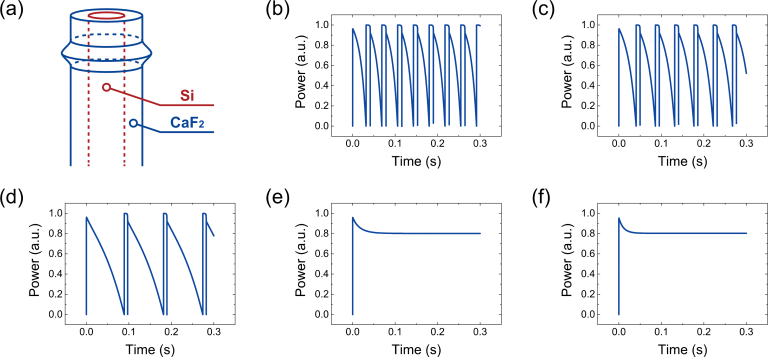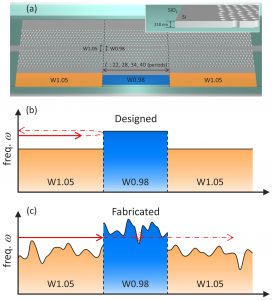Stabilization of thermo-optical oscillations using hybrid micro-optical resonators
Research
Stabilization of thermo-optical oscillations using hybrid micro-optical resonators
Toward Stable Oscillation of Ultra-Energy-Efficient Optical Carcoms
As a means to drastically reduce the energy consumption of information and communication technology, much research is being conducted to shift from electronic circuits, in which most of the energy is lost as heat, to optical circuits, which have extremely high energy efficiency. Optical car combs using micro optical resonators are gaining prominence as an important component of optical circuits because they can determine the time reference of an optical circuit with high precision and are much smaller and less expensive than conventional optical frequency combs using mode-locked lasers.
In particular, micro optical resonators made of calcium fluoride, which has a very small optical absorption coefficient, can oscillate optical carcombs with far less energy than conventional micro optical resonators made of magnesium fluoride or silica. However, in calcium fluoride micro optical resonators, the thermo-optical effect and thermal expansion caused by the small amount of heat generated by the absorption of light by the material act to effectively reduce the size of the resonator and increase its size, respectively, causing the optical power in the resonator to fluctuate periodically, resulting in thermo-optical oscillations. As a result, stable oscillation of the optical CARCOM is not possible, which has made the practical application of calcium fluoride micro optical resonators as an optical CARCOM light source difficult.
In this study, we proposed a hybrid micro optical resonator with a structure in which silicon with high thermal conductivity is embedded inside a calcium fluoride micro optical resonator. The silicon acts as a heat sink in the hybrid microcavity, which can efficiently eliminate heat, the cause of instability.

Fig. 1 Photograph of the fabricated CaF2 WGM microcavity.
Fig. 1 shows the fabricated calcium fluoride micro optical resonator. The following thermo-optical oscillations were observed using this micro optical resonator.

Fig. 2.(a) Measured output spectrum from a CaF2 WGM microcavity (D = The wavelength separation of the generated longitudinal modes is much larger than the free-spectral range of the cavity. This spectrum is unstable during the measurement. (b) Measured output waveform of the pump light (LPF) and FWM light (HPF).
Fig. 2(a) shows the spectrum of Fig. 1 with the micro optical resonator. Fig. 2(b) shows the time waveform corresponding to Fig. 2(a). The pump light power transmitted through the low-pass filter (LPF), indicated by the blue line, can be seen as a periodically fluctuating thermo-optical oscillation. On the other hand, the optical power of the light transmitted through the high-pass filter (HPF), shown by the red line, is repeatedly generated and extinguished under the influence of thermo-optical oscillations.

Fig. 3. (a) Schematic illustration of the proposed structure. (b) Calculated transmitted waveform of the pump from the WGM microcavity shown in (a), when the diameter of the silicon rod is (b) Calculated transmitted waveform of the pump from the WGM microcavity shown in (a), when d = 0 µm.(c) same as (b) but with d = 100 µm, (d) d = 200 µm, (e) d = 300 µm, and (f) d = 400 µm.
Fig. 3(a) shows a conceptual diagram of the hybrid micro-optical resonator, and Fig. 3(b), (c), (d), (e), and (f) show simulation results of thermo-optical oscillations when the diameter of the calcium fluoride is fixed at 500 μm and the silicon diameter is 0 μm (without silicon), 100 μm, 200 μm, 300 μm, and 400 μm, respectively. The simulation results of thermo-optical oscillations are shown for the following cases. As the silicon diameter is increased, the balance between the thermo-optical effect and the effect of thermal expansion changes, and it is confirmed that when the silicon diameter is sufficiently large, the thermo-optical oscillation disappears as the thermo-optical effect and the effect of thermal expansion reach a thermal equilibrium state.
These results show that the use of hybrid micro optical resonators can eliminate the problem of thermo-optical oscillation, resulting in the realization of an ultra energy-efficient optical carcom oscillator made of calcium fluoride.
- Categories
- 研究トピックス



